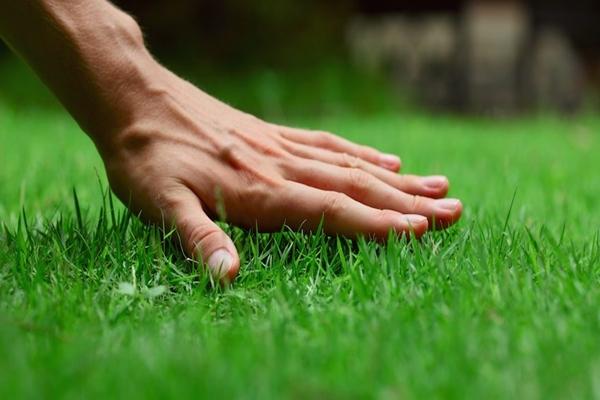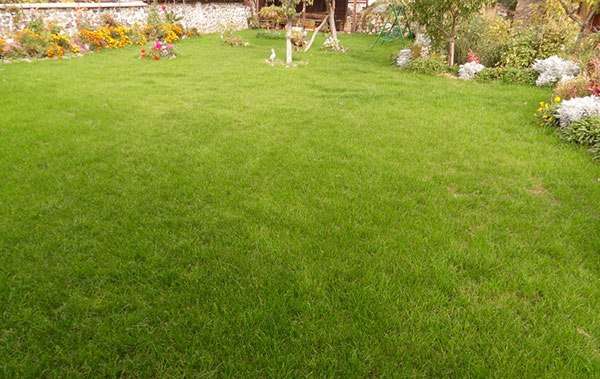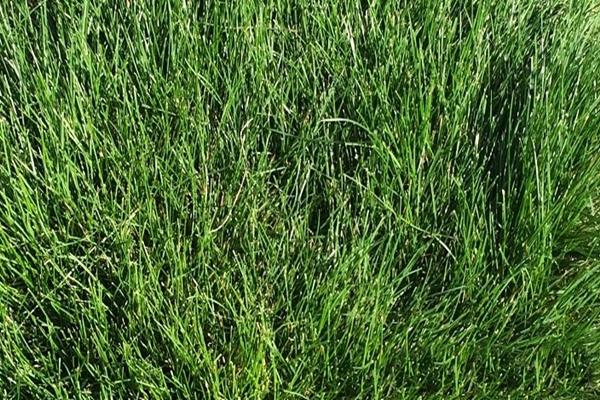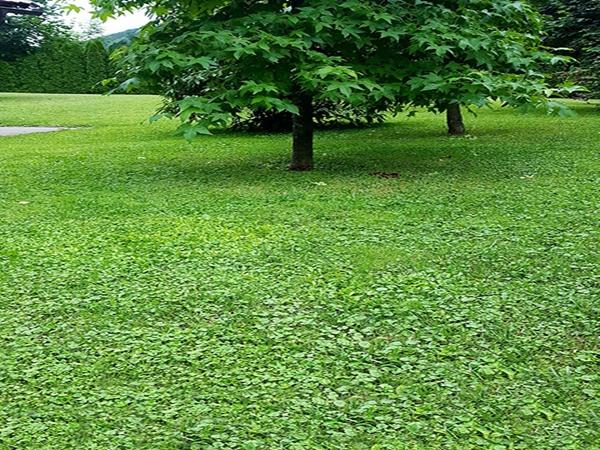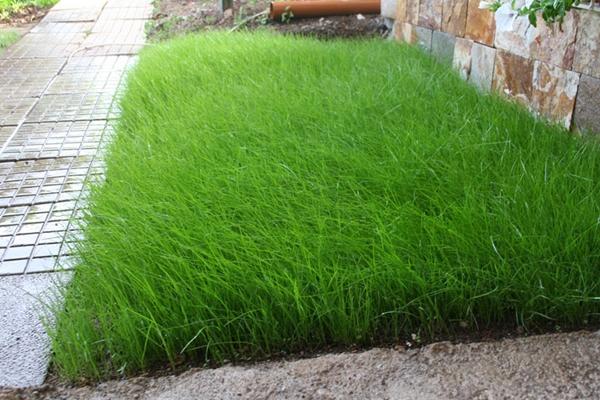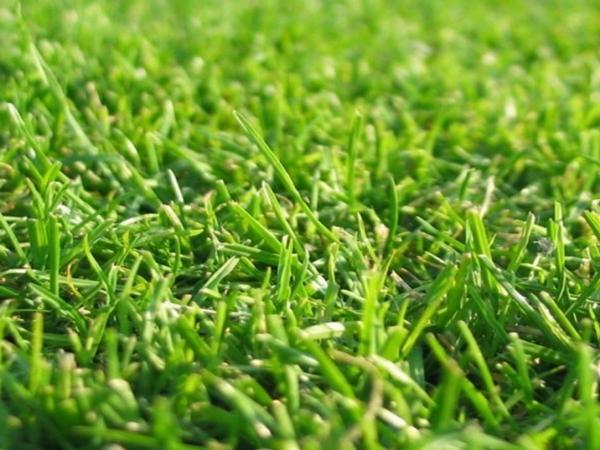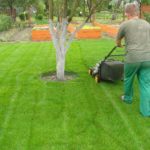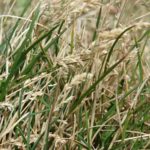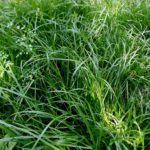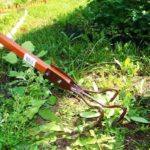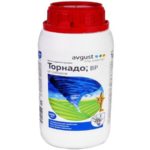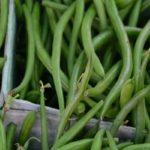A neat lawn, free of weeds, is the dream of gardeners and summer residents. Such a lawn looks aristocratic and is convenient for playing outdoor games. Keeping weeds out of your favorite lawn is no easy task. It is important to properly prepare the site and choose a variety of lawn grass that is capable of destroying and displacing weeds from the ground. Such a lawn is resistant to wiping and forms a powerful root system that does not allow weeds to germinate.
How does a lawn help against weeds?
To prevent weeds from growing on the site and spoiling the landscape, problem areas are sown with lawn grass mixtures. It is impossible to completely get rid of weeds on a site without the use of herbicides, but it is possible to reduce the amount of unwanted grass to a minimum. Carefully select a variety of lawn grass, which should have the following properties:
- Increased drought resistance.
- Powerful root system capable of intertwining the roots of other plants.
- Short stature.
- Resistance to trampling.
Important! The lawn will help control weeds only if it is sowed densely. To achieve greater effect, the sowing rate per 1 square meter is doubled.
The principle of action on weeds is based on the creation of a dense layer of intertwined rhizomes of lawn grass, which does not allow weeds to germinate and exist comfortably.
Lawn grass is often used as green manure: it is dug up with soil as organic mulch. These types of grasses include: clover, fescue, lupine. These weed-displacing plants additionally enrich the soil with potassium and increase its fertility. The following year, cultivated plants are planted on rested and cleaned soils.
Grass that is not afraid of weeds
You can defeat weeds on your site without the use of herbicides and other chemicals. There are a huge number of types of grasses that are not afraid of weeds.
When choosing a lawn grass variety, pay attention to such a parameter as stunting. It is these varieties of plants that are capable of creating dense interweaving of roots.Vegetation that is not afraid of weeds has strong immunity and is able to grow in conditions of changeable climate, drought and waterlogging.
Grass varieties that kill weeds
Herbs that destroy weeds in areas are distinguished by a highly developed root system, are able to quickly grow and gain green mass, do not get sick and withstand the vagaries of weather and cold periods. Green manure herbs will help get rid of weeds and enrich the soil with humus. Flower lawns will decorate the landscape and create coziness on the site. Let's look at popular varieties of lawn grass that can destroy weeds, forever displacing them from the site.
Bentgrass
Belongs to the cereal family. It is distinguished by its short stature and the ability of the root system to create a dense carpet that kills weeds. The greens are a rich light green color and juicy. Bentgrass is characterized by strong immunity to fungal diseases, is frost-resistant, and can withstand trampling. But the variety is afraid of drought; additional watering is necessary during dry periods.
Red fescue
To prevent weeds from growing on the site and spoiling the landscape, various lawn grasses are used. Perhaps the most undemanding lawn grass in terms of growing conditions is red fescue. Able to grow in poor soils, it copes well with weeds, leaving them no chance to germinate. It has gained popularity among gardeners for its ability to tolerate low mowing. Tolerates trampling and frosty winters. It has a slow growth rate, is able to grow in the shade, and tolerates drought with dignity. You can sow a red fescue lawn in the fall or spring. This type of grass is included in almost all lawn grass mixtures.
Meadow bluegrass
A winter crop that can be used to sow a plot as green manure in the fall. Succulent grass shoots appear in early spring, immediately after the snow cover melts. Mowing stimulates the formation of new shoots, so the lawn looks well-groomed, without “bald spots.” Bluegrass is self-pollinating and is in the active growth stage for 4-5 years.
Microclover
Modern development of landscape designers. Microclover leaves no chance for weeds to survive. The height of the bush is 5 centimeters, it forms a lawn covering evenly and of the same height. This type of lawn does not need mowing. At the same time, the plant is so aggressive that it fills empty areas in the soil and kills weeds. If you plant your garden with microclover, you can forget about weeds. Microclover grows on any soil, in various climatic conditions.
Ryegrass
A herbaceous perennial with a long life cycle of 7-8 years, killing weeds on the site. The lawn retains its rich green color until November. Ryegrass exhibits its best qualities in warm southern climates. It does not tolerate frosty winters well and is prone to freezing. In the first year after planting, the lawn does not need to be mowed.
Ready-made grass mixtures
To create a “durable” lawn, ready-made grass mixtures are often used. Joint cultivation of low-growing varieties of perennial lawn grasses on the site will help get rid of garbage plants; it is important that the plants match in growth rate, height and requirements for growing conditions.
"Canada Green"
This grass mixture has been selected and adapted to growing conditions in the northern regions. The mixture consists of several varieties of fescue and ryegrass. The first shoots appear 10 days after sowing. The mixture is suitable for growing in urban landscapes.“Canada Green” is resistant to trampling and does not freeze in winter. On such a lawn you can play football and other outdoor games. The coating does not require thinning and is not afraid of pests and fungal infections. "Canada Green" belongs to premium grass mixtures.
"Liliput"
Low-growing lawn with a slow growth rate. This grass mixture is often called “grass for the lazy”; cutting of the plantings is required only in the second year. “Liliput” consists of one-quarter red fescue. The lawn withstands low mowing and quickly recovers from damage. Additional watering is required. The grass mixture includes several varieties of fescue, meadow grass, thin and bentgrass.
"Dwarf"
A grass mixture of low-growing grasses that do not require regular care. Suitable for growing in the northern regions of Russia. The mixture consists of meadow fescue, red fescue and meadow grass. The grass mixture is especially popular in the Urals.
One third of the mixture consists of perennial ryegrass. The composition also includes meadow fescue, red fescue, meadow grass and wheatgrass. The lawn does not require frequent mowing and can grow in poor soils. The optimal cutting height is 6-8 centimeters.
Preparing the area and its correct seeding
You can get rid of weeds on your site for a long time using herbicides or sowing areas with lawn grasses. To achieve maximum weed control and a beautiful lawn, the area must be prepared before planting the grass. Territory preparation includes:
- Treating the soil with herbicides.
- Manual weed control.
- Digging and loosening the soil.
- Application of special fertilizers for lawn grasses.
- Soils with high acidity are limed.
- After loosening and fertilizing, the soil is watered and compacted using a roller.
After all necessary measures have been carried out, the soil is left to stand for a week. During this time, some of the weeds will grow in and must be removed manually.
Planting lawn grass is most often done in spring or autumn. Seeds are sown manually or using a special seeder. For grass mixtures, the seeding rate is indicated in the instructions. After scattering the seeds, the soil is sprinkled with a nutrient soil mixture, then pressed using a roller. Next, the plantings need to be watered. It is best to use a sprayer, this way the soil is not washed away and the seeds remain in their place.
To add sophistication to the landscape of the area where the lawn is sown, additionally create flower beds, plant flowers and ornamental shrubs.

